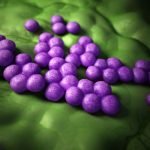Anti-Aging Nutrition and Phytotherapy
 “Old age itself is not a disease, but a condition which may lead to illness on various levels due to the hyporeactivity characteristic of this state … Aging constitutes an inability to correctly respond to various rivaling stimuli.” – Bianchi, 1994
“Old age itself is not a disease, but a condition which may lead to illness on various levels due to the hyporeactivity characteristic of this state … Aging constitutes an inability to correctly respond to various rivaling stimuli.” – Bianchi, 1994
Treating patients ages 65 and older requires specialized clinical skills and familiarity with the physiology and common conditions of this phase of life. For most individuals, there are health shifts away from middle age at 65, but the biggest changes are often after age 75 or 80. Just as children display narrow bands of tolerance for infection, dehydration, starvation and other stress, so do seniors, although they typically manifest crisis states at a delayed rate compared to children.
Avoiding Malnutrition in the Elderly
Anti-aging nutrition and phytotherapy can be of tremendous benefit to seniors when elegantly applied and individualized. Seniors pose a challenge because their response and tolerance to treatment varies more widely than when they were middle aged. Anti-aging nutrition means nutrient-dense, high-quality whole food, organic when practical and free of antibiotics, fungicides, molds, bacteria, hormones and hazardous residues. The Mediterranean diet – high in fresh fruits, vegetables, grains, olive oil, nuts and seeds, lean protein; low in refined food, saturated fat, sugar and meat – has been associated with reduced risk of heart disease, diabetes, obesity and Alzheimer’s. Flavonoid and antioxidant science is discovering the vast benefits of these actives in greens, fruits, produce, whole grains, vegetable seed oil, and culinary and medicinal herbs. And although supplements are useful, they do not substitute for the array of naturally occurring, heterogeneous constituents in quality diets.
Seniors are at high risk for reduced nutritional intake, nutritional absorption and nutritional status due to various age-related factors: dentures and mouth pain; swallowing incoordination; dry mouth/esophagus (aggravated by many drugs); nausea (drug, disease, gastric motility induced); constipation or diarrhea (less food causes fewer symptoms); abdominal pain (gall stones, ulcers, cancer, angina, ascites); impaired smell, taste, sight and taste make food less enjoyable; eating and food preparation are impaired by arthritis, dementia, depression; etc. New studies suggest that reduced gut cholecystokinin and neuropeptides diminish the drive to eat and increase satiety threshold (Morley, 1997) The Merck Manual of Geriatrics is a useful clinical resource for physicians who see patients ages 65 and older.
Since a patient’s life can be saved by an alert physician who promptly diagnoses malnutrition or sudden dehydration (often missed because symptoms are attributed to existing disease), see Table 1 for a review of symptoms (adapted from Hamilton, 2001). Table 2 provides a list of common nutrient deficiencies in the elderly.
Anti-Aging Nutrition and Phytomedicine Indications
Hundreds of anti-aging products are available today, and their number is rapidly growing. Every practitioner has a list of essentials for the healthy patient who wants an anti-aging regimen.
Acknowledging the impracticality of attempting to discuss every anti-aging agent, what is suggested in Table 3 is a partial list of those with a good clinical track record according to my clinical observations.
Anti-aging nutrition and phytotherapy can prolong health, contribute to longevity and enhance the quality of life. The physician’s first priority is to prevent or recognize elderly malnutrition or dehydration and diagnose disease. The second is to tailor a program to each patient, with an armamentarium of traditional and science-based lifestyle, dietary, nutrient and phytomedicine recommendations that target the problems of vitality, inflammation, memory and vision loss, skin health, depression, chronic pain, GI and heart disease, and more. Emerging research makes ours an exciting time to blend traditional knowledge with new discoveries.
Lisa Meserole, MS, ND has been in clinical practice since 1990. Between 1990-2001, she worked in integrated medical clinics. Her introduction to laboratory research began in 1975, when she worked in human, animal and tissue culture nutrition research projects. Dr. Meserole was chair of the Bastyr University nutrition program for three years, and later chair of botanical medicine for three years. She studied Western and eclectic botanical medicine at Bastyr, while including Chinese and Tibetan herbal medicine in her education. Dr. Meserole earned a master’s in human nutrition from the University of Washington and was a registered dietitian for 12 years. She was project coordinator for a clinical trial pilot study on a plant-based medication for HIV patients at Bastyr Research Institute; and was a founding board member of the Bioresources Development and Conservation Programme. Her chapter on Western Herbalism appears in Fundamentals of Alternative and Complementary Medicine (Churchill Livingston, 1995). Dr. Meserole’s primary interests include: integrated holistic primary healthcare, endobiogeny, clinical botanical medicine, nutrition and research, and issues of quality control and sustainable worldwide access to medicinal plants and foods.
Table 1. Detecting Dehydration in the Elderly
| Skin turgor* | Headache | Confusion | Decreased urine output | Orthostatic hypotension |
| Sunken eyes | Loss of appetite | Dizziness | Irritability | |
| Dry mucous membranes | Muscle weakness | Acute 2-lb weight loss/1L fluid lost** | Anxiety | Lab signs of dehydration |
| Vision complaints | Charley horse | Irregular pulse | Fever |
* Poor skin turgor on the forehead or sternum – not the traditional “pinch test” on the hand or arm, which become unreliable hydration indications in elderly
** Heart disease patients may gain weight from a decompensating heart and water retention, so weight alone becomes insufficient to evaluate dehydration.
Table 2. Common Nutrient Deficiencies in the Elderly
| Protein | Vitamin A | B12 | Biotin | Calcium | Potassium |
| Calories | Vitamin D | Folic acid | Pyridoxine | Magnesium | Sodium |
| Fluids/Water | Vitamin E | B6 | Inositol | Iron | Phosphorous |
| Essential fatty acids | Vitamin C | Niacin | Vitamin K | Selenium | |
| Fiber | Flavonoids | Riboflavin | Chromium | ||
| Aromatic Spices | Thiamine | Manganese | Zinc |
Partial list of nutrient functions relevant to the elderly:
- Vitamin A, beta-carotene: Aid immunity, skin, mucosa, eyes and vision
- B12, folate, B6: Deficiencies are associated with poor cognition, fatigue, neuropathy, some anemias
- B12, folate: Deficiencies are associated with hearing loss, certain anemia, paresthesias
- Thiamine: Supplementation improved sleep, energy, bp and weight (Wilkinson & Hanger, 1997). Also critical are other B vitamins for heart function, palpitations.
Table 3. Ten Healthy Aging Objectives and Treatments
| Objective | Treatment | Comment |
| Bone density preservation | Calcium (800-1200mg), Mg (400-800mg), D3 (400-1,000 IU), vitamin A (5,000 IU), Phos (700mg), potassium (4,700mg), Mn (10-25mg), Boron (3-4mg), B6 (25-50mg), B12 (100-1,000 mcgm), Folate (800-1,000mcgm), vitamin C (500+mg), vitamin K (1mg), Zinc (20-30mg), Si (10mg), Cu (3-4mg), Fl (3-4mg), Equisetum arv, Urtica r | Adequate diet and protein, diet low in fast foods, soda, caffeine is associated with bone density protection. Many women not on HRT who exercise, don’t smoke and use these nutrients improve their bone density scores (witnessed in my clinic). There are herbal acetracs* that aid bone nutrition. |
| Preserve teeth and gums | Same as above, plus B2, protein and essential fatty acids, oil pulling**, essential oil Melaleuca alt as topical (four drops on cotton swab dipped in olive oil as gum massage for gingivitis …), Chlorophyll gargles | Avoid high-sugar diets and chronic daily use of any essential oil in high doses (hepato/renal and CNS toxicity) |
| Preserve skin and hair | Protein; cysteine; B complex; Biotin (1000mcgm); essential fatty acids; Fe; Zn; vitamins A, D, C; MSM, laser comb, Polygonum multiflori radix (He Shou Wu) | Skin-Vit C ester, not L ascorbate. Topical skin tx too exhaustive to list. Laser comb, He shou wu are for hair support, not skin. Magnetic hair brush, FNS serum also aids thick hair |
| Weight, metabolism, lean body mass | Chromium, L carnitine; essential fatty acids and CLA; medium-chain triglycerides; low-dose potassium or food sources; B vitamins, especially B6; branched-chain amino acids; enzymes; protein powders (low sugar); liver herbs and cleansing | No stimulant herbs or products are listed; though many work, they cause regain when stopped. Conjugated linoleic acid (CLA) |
| Energy and stamina | B complex, essential fatty acids, protein, medium-chain triglycerides, ginsengs, Glycyrrhiza glabra rt, organic juicing, Lycium barbarum – Gogi | Use Asian herbs only in consultation with trained doctor, acupuncturist or herbalist to personalize correct herbs and formulae |
| Memory, clear mind | B complex, essential fatty acids, ginkgo and gotu cola, Rosemarinus off, smart drugs, nourish yin or resolve phlegm formulae (Lycium formula, etc.) in TCM | TCM |
| Stress | Amer ginseng, Rhodiola, Sib ginseng, Bs, Ganoderma, essential fatty acids, alpha lipoic; herbal calmers Scutellaria v, Verbena off, Melissa off, Matricaria chamomilla, essential oil Lavendula spicata, essential oil Occinum basalicum | |
| Preserve eye health | Vitamins C, B complex or B2, A/beta carotene (both at recommended daily intake), D, E; Zn, I, Se, essential fatty acids, anthocyanidins from Bilberry and other fruits (lutein, lycopene, zeaxanthin); green tea catechins | I have seen severe macular degeneration arrested using correct nutritional support |
| Protect heart, circulation | B50 or complex, CoQ10, essential fatty acids, fruit flavonoids (pomegranate, berries, Crataegus sp (Hawthorne flower/fruit), Allium sativa, Capsicum sp | |
| Sexual vitality | B complex, Panax ginseng, Dendrobium nobile, Epimedium sag, Coryanthe yohimbine, Arginine | Incomplete list, but each works if patient is correctly assessed (some of these are contraindicated in heart disease) |
Notes: Doses in parentheses are typical daily doses suggested in the literature for the corresponding anti-aging objective; may be controversial. Homeopathics are not listed, as they are outside the scope of this article.
* An acetrac is a vinegar extract of herbs, and extracts their minerals. Therefore, for bone and cartilage, the acetrac is far more helpful than dry herb or tincture of the same herb.
** Oil pulling is a morning regimen of a 20-minute mouth swish with organic safflower oil, then spitting out.
Author’s 5 Favorite Phytomedicines for Healthy Aging
- Essential oil of lavender and rosemary: To “calm wind disease that predominates in old age,” according to Tibetan and Chinese medicine. Warming medicinal baths with essential oil of lavender or rosemary are excellent, as is massage and skin care using true vegetable oils. These nourish the skin and calm the mind.
- Ginkgo biloba with centella asiatica (gotu cola): To enhance memory and cognition at midlife or after head injury (Ginkgo is a mild anticoagulant, contraindicated before or after surgeries, and in bleeding problems).
- Ginsengs: American ginseng (Panax quinquefolius) is a cool tonic. Siberian ginseng (Eleutherococcus senticosis) has been researched and shown to aid adaptation to physical, environmental and emotional stress. Russian cosmonauts entered orbit on it as an adaptogen. Panax ginseng is more warming and stimulating.
- Licorice root (Glycyrrhiza glabra – contraindicated in hypertension and Addison’s): Some patients report a lift in their fatigue within days using this local favorite.
- Rhodiola rosea (Russian rhodiola): Used in Siberia to cope with cold winters. Anti-fatigue plus strong antidepressant and mental clarity effects, with immune benefits. Also used by Russian cosmonauts.
References
Bianchi I: Geriatrics and Homotoxicology (ed 2), Baden Baden, 1994, Aurelia-Verlag, p 29.
Morley JE: Anorexia of aging: physiologic and pathologic, Am J Clin Nutr, 66:760-773, 1997.
Brown S: The Osteoporosis Education Project, 2005.
Wilkinson TJ et al: The response to treatment of subclinical thiamine deficiency in the elderly, Am J Clin Nutr 66:925-28, 1997.
Hamilton S: Detecting dehydration in the elderly, Nursing Dec, 2001.








